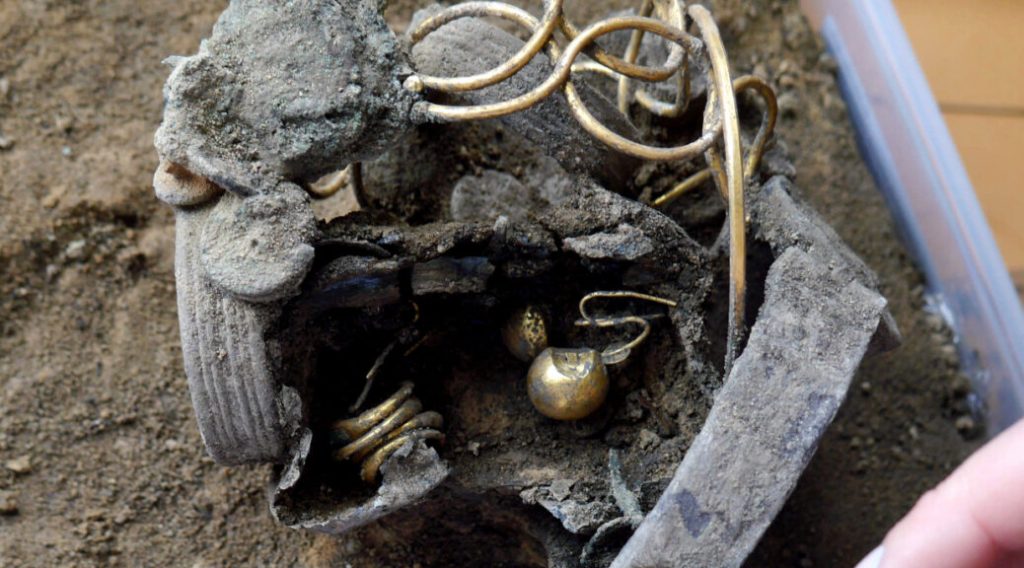Ancient Roman jewelry found beneath British department store

Ancient Roman jewelry found beneath British department store
According to a British archaeological organization, a small pit filled with ancient Roman jewelry that dates back almost 2000 years to a violent riot that occurred around A.D. 61 was unearthed beneath a London-area department store.
The buried treasure was found by an archaeologist with the Colchester Archeological Trust, a registered charity dedicated to the promotion of archaeology in the area, during an excavation under the Williams & Griffin department store in the city centre.

The haul consists of three gold armlets, a silver chain necklace, two silver bracelets, a small bag of coins, a “substantial” silver armlet and a small box of jewellery with four gold rings and two sets of gold earrings.
The archaeologists said: The surprise find represents the first discovery of precious metals in the British town of Colchester.
“It is very exciting for us, as we only find precious metals very rarely,” the trust wrote in a statement.
“The treasure is archaeologically significant because it was buried under the Boudican destruction debris, and it tells a powerful story.”
The Boudican Revolt occurred when native Britons staged an uprising against the Roman occupation of their country.

The rebellion was brutal, with archaeological evidence showing that buildings in London, Colchester and St Albans were burned to the ground and that many of the towns’ inhabitants were slaughtered.
Eventually, Roman army members put down the protest, preserving Britain’s place in the Roman Empire.
“The find is a particularly poignant one because of its historical context,” the trust wrote in its update.
“It seems likely that the owner, or perhaps one of her slaves, buried the jewelry inside her house for safekeeping during the early stages of the Boudican Revolt, when prospects looked bleak.”
The block of soil from which the jewelry was recovered is still being excavated at a conservation laboratory, and the researchers say more artifacts could be found in the area.
The archaeologists said whoever buried the jewelry may have been unable to rescue it after a fire leveled both the house and the surrounding town. Just before they discovered the trinkets, archaeologists also found human bones, embedded in debris from the ancient riot, near the site.
Two of those bones showed signs of sword cuts, which suggests somebody inside the house fought and died there, the scientists said.

Other finds at the site include meal ingredients — such as wheat, peas and grain — and a wooden shelf that was likely used to hold the ingredients. The shelf probably fell down as the revolt raged, but traces of its carbon are still on the floor, the archaeologists said.
In general, the revolt left a black and red layer about 1.6 feet (0.5 meters) thick under the present-day town of Colchester.
“The layer consists of the stumps of the standing burnt clay walls of buildings smothered under a mass of broken and collapsed fragments of clay from the upper parts of the walls,” representatives from the trust said.
The jewelry will likely be given to the Colchester and Ipswich Museum Service after it is analyzed, the archaeologists said.